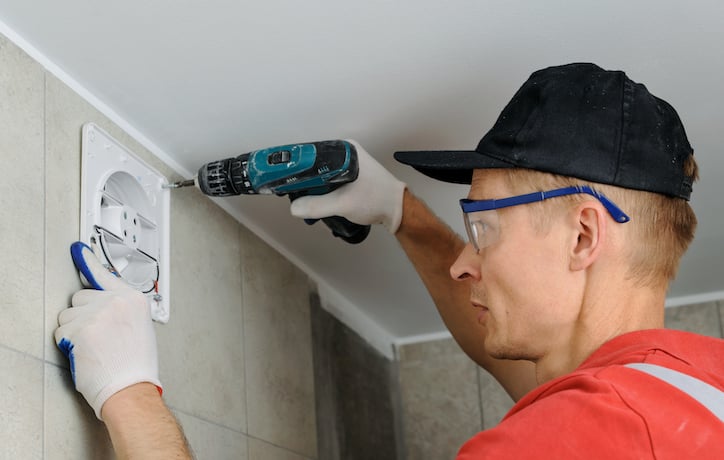Choosing new software solutions often happens during (or as a result of) an already stressful situation. In a perfect world, new software solutions would be implemented proactively. More realistically, tools like CMMS programs are adopted when teams have outgrown former processes or found inefficiencies in their existing systems (e.g., pen and paper).
Global Market Insights predicts the enterprise asset management market will grow nine percent between now and 2032 from a current $4 billion value—a growth primarily attributed to the influx and adaptation of new technologies. Chances are, as maintenance managers, you either will begin using a CMMS program or upgrade your current system in the next few years.
Successful CMMS Implementation
The best way to avoid additional problems and achieve a low-stress CMMS setup is to co-create a plan with an implementation expert to make onboarding easy and efficient.
Looking for an easy-to-use computerized maintenance management system? Schedule a consultation with Maintenance Care to get started!
The key steps to a smooth CMMS implementation process include discovery and analysis, onboarding, team training, implementation and follow-up. If you’re just looking for a simple way to digitize work order requests, you can sign up to begin using a basic CMMS for free today.
If you want more robust features and full access to your facility and tasks across devices, it’s important to have a team that guides you through the setup process so you and your team can use your system most effectively.

Step 1: Discovery & Analysis
The first action in a new CMMS software setup is determining your team’s needs and overall business goals.
Consider the following questions:
-
What features can you not live without?
-
What features do you never use and why?
-
What features would you love to have available in your dream CMMS program?
While nearly half of leaders and engineers in the manufacturing industry report they use a CMMS, some data shows 80 percent of users don’t take full advantage of all of their current software’s features. Internal discovery and analysis of your needs help you compare and contrast software solutions in a data-driven way.

Once you have narrowed down your software options, schedule discovery calls with each company. Often, you can set up a demo or even a free trial version of a software solution, which helps you see firsthand if the software will fit the list of needs you made note of earlier.
Keep a working document, spreadsheet or table for comparison, where you track which software includes specific features, price points and other comparison information.
Step 2: CMMS Setup & Onboarding
Once you choose a software, the CMMS setup and onboarding process is a crucial part of long-term success. Some managers prefer a more hands-on approach, actively customizing pieces of the software themselves. Others prefer to have specialists from their new software company set everything up and walk them through it afterward.
Due to the specialized nature of CMMS programs, especially if they include features you are not used to using, you may want to take advantage of the onboarding, set up and training available through the software company.

The first three weeks of new CMMS implementation are crucial for proper training, and solidifying a habit of using your new program, as well as security testing. Having an onboarding team helps you to make the most of that initial transition period.
The onboarding and setup process often is where key team leaders are trained on the software, looking for glitches and opportunities to tweak and change things to best fit the previously determined team needs. Keeping this training contained to a smaller group of people will make the process smoother and more efficient; later, those team leads can train additional users and bring other teams across the company up to speed.

The initial training sessions allow you to explore the interface populated with your actual business information (sometimes demos or trials use dummy information for demonstration purposes). This is the time to ask as many questions as you can think of—there is no wrong question except that which goes unasked!
Step 3: Team Training
Team training is separate from onboarding because it often focuses on some different elements of the software. Whereas the onboarding process for team leads is incredibly robust and in-depth, often team training is tailored to what specific subsets of your team or overall maintenance software users need to use.

For example, if you need management to have access to specific reports or other data, they need separate training from your maintenance staff who is responsible for fulfilling work orders, asset tracking and other on-site tasks. This is the time to test various types of user settings and permissions, as well as make sure each type of user has access to the features they need for maximum effectiveness and efficiency.
Tip: Find a CMMS solution that offers unlimited users with no added cost per extra seat.
Step 4: Implementation
After your team is cut loose and starts using the software full-throttle, it probably will take a few weeks to a few months to really settle in, become comfortable with the system and start working out any hiccups that pop up.

During this time, make sure to document all of the details when something goes awry so you can communicate as clearly as possible with your CMMS support team. Take screenshots of error messages or other visuals that will help your contact best support you and troubleshoot issues.
Most importantly, stay patient with your team, your team leaders and your software. Creating a seamless, well-oiled system may take some time, especially as your staff works to balance hands-on labor with utilizing a computerized system.
Step 5: Follow-Up & Goal Setting
Now that your CMMS setup is complete and working smoothly, it’s time to check in with your team on the list you first put together during your discovery and analysis.
Ask your team (either through formal documental or informal conversation) the following:
-
What features are they loving?
-
What features are they not using as expected?
-
What do they want the software system to do for them as things change and grow?
Finding a supportive CMMS provider also helps make the process of implementation, everyday use and goal setting smoother. Maintenance Care puts together an implementation itinerary for users and custom tailors their onboarding experience depending on their specific needs.
Learn more about starting 2023 off with a new tool, increasing your efficiency and decreasing your stress by scheduling a consultation with Maintenance Care today!








